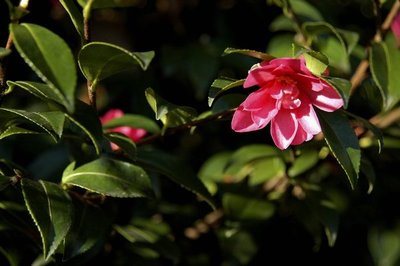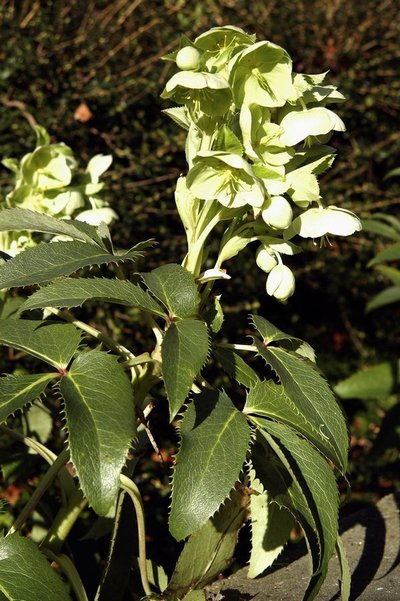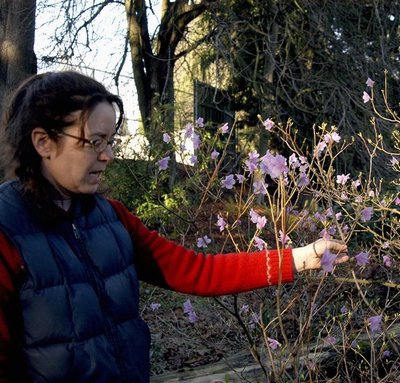January 26, 2006
Hints of color abound among UW foliage — even in winter
The sun, uncharacteristically of late, was out on Tuesday afternoon — a harbinger of springtime to come.
But for the plants meticulously installed and maintained at the UW over the years, sunny weather is not an absolute necessity. Many show off colors here in deep winter, unmindful of the calendar, and the campus community wouldn’t have it any other way.
A quick tour of Grieg Garden and nearby environs in the tutelage of UW gardener Gabriel LaValle revealed some of these hardy types, which offer points of color with promises of even more to come.
Sure, the Arboretum has its colorful year-round charms. But, LaValle said of the upper-campus area, “I think we have just as many types of plants here, though you may get some exercise finding them, is all.”
Witness the small, pink Camellias dotting the edge of the garden — spots of color that LaValle said have been in bloom since December. Or the delicate, pale blossoms of the sweet box (Sarcococca ruscifolia), or the small pink buds of the daphnes, whose attendant fragrance seems to speak volumes about the changing of winter into spring.
Raising up from winter’s bed with bright greens morphing to shades of pale green and off-white are the Helleborus corsicus plants — winter bloomers who have even been known to rear their heads up and through a blanket of snow. Their cousins Helleborus orientalis, also known as the Lenten Rose, also bloom in winter, in a pinker shade.
LaValle, a relatively recent addition to the UW with experience in private gardens, said this time of year finds her still raking up winter’s fallen leaves and doing “lots of pruning.” Gesturing to a nearby plant sparsely decorated with small late-winter blooms, she said pruning can be more effective just now because “you can see the structure of the plant.” Even as she spoke, she noticed a length of dead branch and tossed it clear of the plant.
Rhododendron mucronulatum, a deciduous rhodie also called Cornell Pink, is in evidence not far from the Penthouse Theater. These bring color in winter with blooms that precede the plant’s vividly colorful leaves, LaValle said.
In fact, she noted, the campus greenery has been planned to offer colorful highlights all year long. And as many on campus know, the design of UW plants is guided by Bill Talley, campus landscape architect, in the Capital Projects Office.
Talley wrote in an e-mail, “Almost as interesting to gardeners are the emerging tips of bulbs and perennials, which signal a spring not too far away!” Crocuses come first, he said, “but the dwarf daffodils can be just as evident in mid-February, or even before. The whole sequence can be delayed with a late winter cold spell.”
By Wednesday, the sun’s curtain had again been drawn and rain threatened a return. But for those who know where to look, such as LaValle and Talley and fans of foliage campuswide, campus flower beds and foliage contain surprises aplenty to mitigate the gloom.
And then, just wait until spring.





